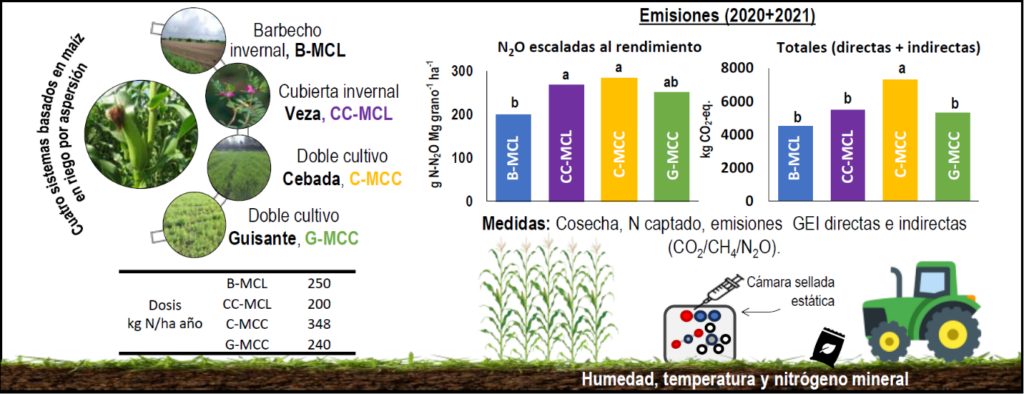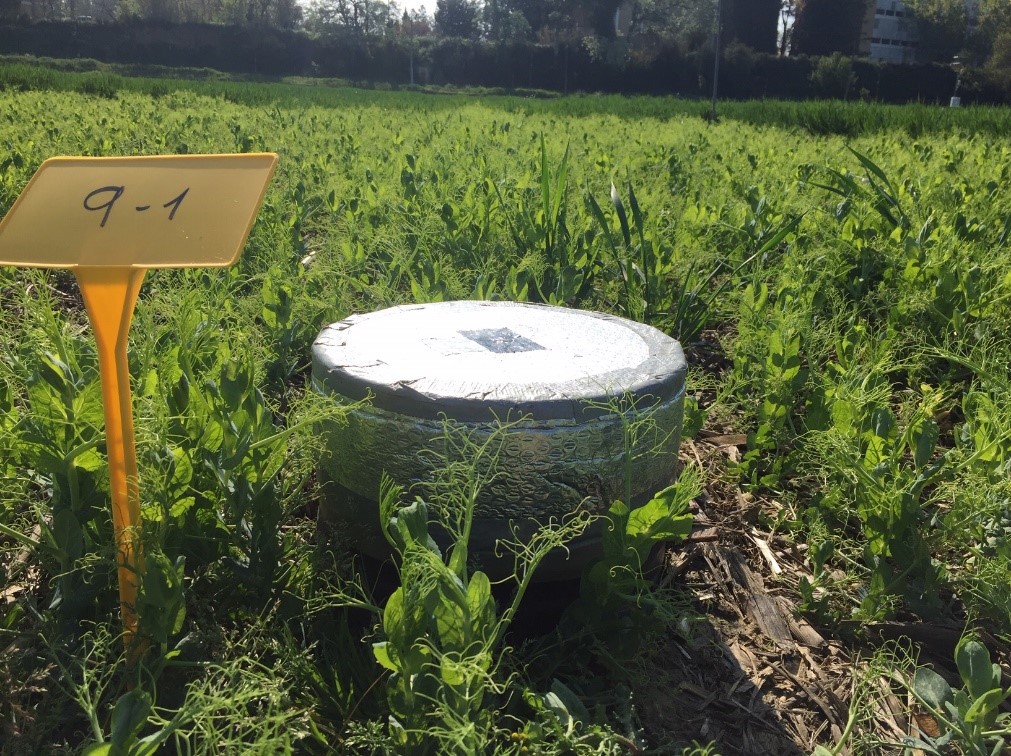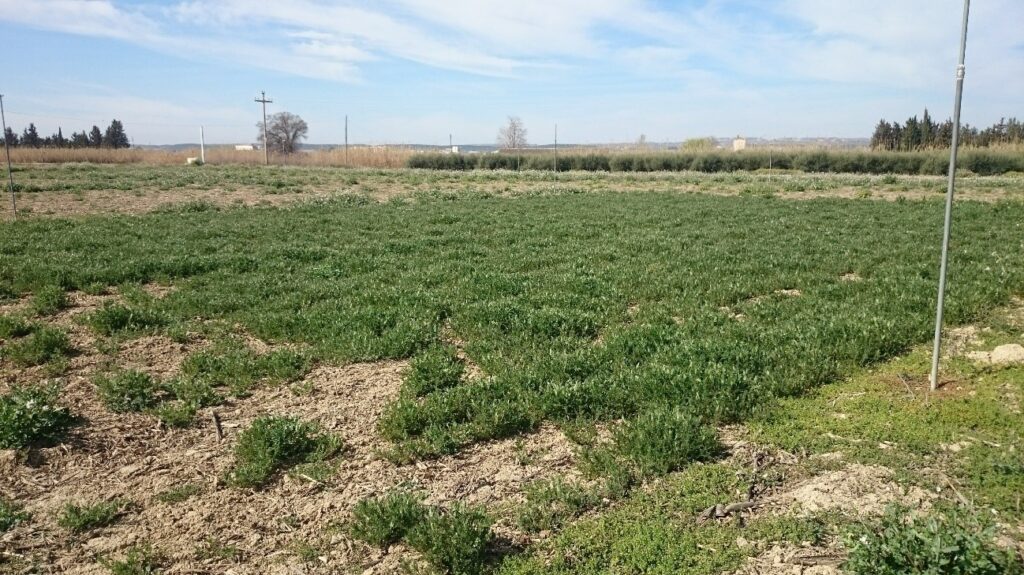The diversification of corn cultivation systems with a fallow period during the winter could not only contribute to greater agrodiversity but also to the optimization of inputs and the reduction of negative environment impacts, such as greenhouse gas emissions.
With this premise, a study was carried out at the EEAD (CSIC) during 2020 and 2021. In this study, the impact of the diversification of corn monoculture on greenhouse gas emissions, especially nitrous oxide, was evaluated. Diversification was carried out both by introducing a cover crop in winter and by practicing double cropping, introducing a second productive crop in the same year. Vetch was chosen as a cover crop during the winter period since – being a legume – it permits reductions in nitrogen fertilization, thanks to its symbiotic fixation. The practice of double cropping was introduced by combining corn with barley, a system characterized by its high production, or pea, considered a high-value crop with lower nitrogen requirements.

The corn-barley system was the most productive, but its high demand for fertilizer increased direct emissions of N2O (4,730 kg CO2 eq. ha-1 considering the whole experimental period, 2020+2021), being 79%, 35%, and 30% higher than those emitted by the corn-fallow, corn-pea and corn-vetch system respectively. Its greater production did not reduce N2O emissions scaled to harvest compared to the rest of the systems. When N2O emissions were scaled to the nitrogen captured by crops, emissions from the corn-pea double crop were similar to the corn-fallow and corn-vetch systems.

In the study, indirect emissions derived from the use of machinery, irrigation installation and the production of inputs (fertilizer and pesticides) were also calculated. Irrigation, fertilizer production, and machinery use constituted 26%, 31%, and 27% of total indirect emissions. The emissions derived from the production of fertilizer in the systems without legumes corn-barley and corn-fallow were 172% and 45% higher than the average of the systems with legumes corn-vetch and corn-pea (461 kg CO2 eq. ha -1). When comparing the total emissions (direct and indirect) and these scaled to the production of the systems, no differences were found between the corn-fallow and corn-pea systems.

The study concludes that in all direct and indirect emissions, the introduction of legumes as a productive crop (pea) obtained better results compared to their introduction as cover crop (vetch). It is possible that the fertilizer dose could be reduced in the practice of corn-pea double cropping. Peas being a valuable crop makes this system an interesting option to diversify corn-based systems without increasing their emissions.
Zugasti-López I., Cavero J., Clavería I., Álvaro-Fuentes J., Isla R., 2024. Alternatives to maize monocropping in Mediterranean irrigated conditions to reduce greenhouse gas emissions. Sci. Tot. Env. https://doi.org/10.1016/j.scitotenv.2023.169030

